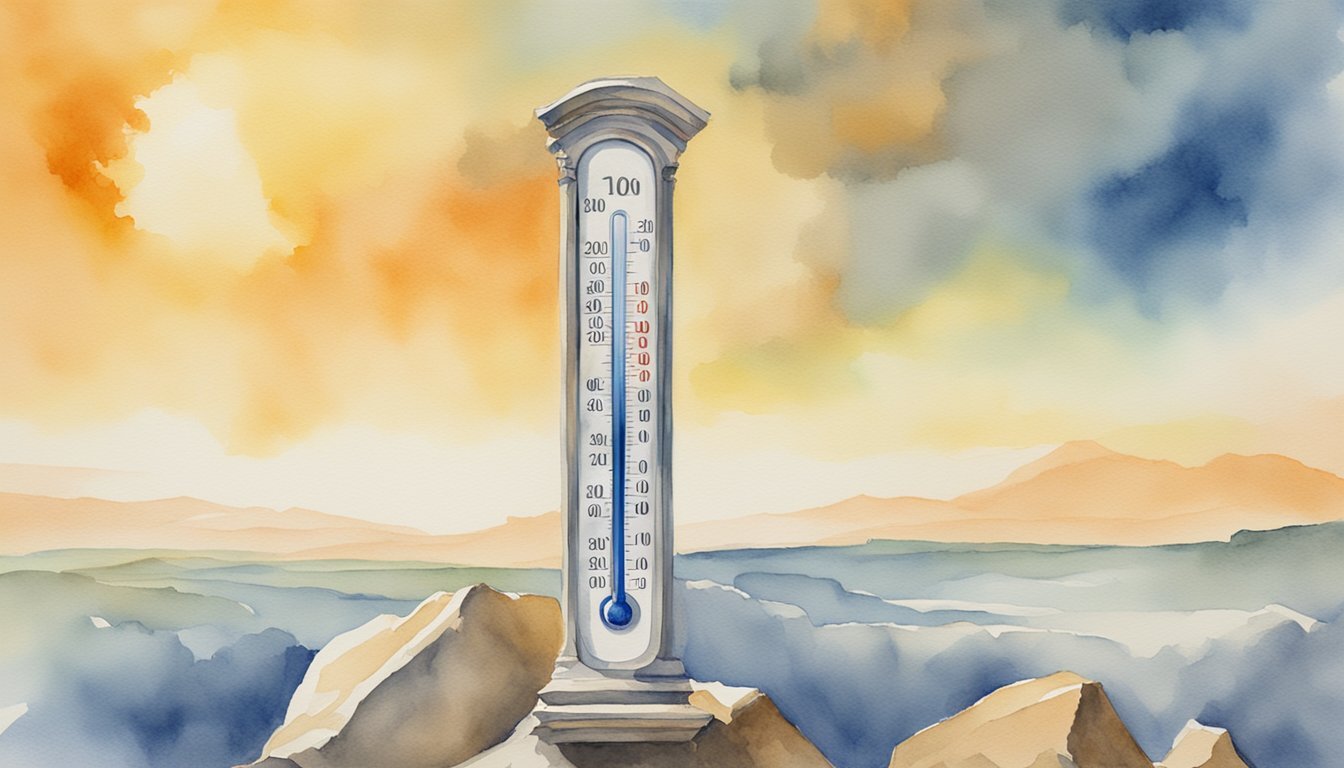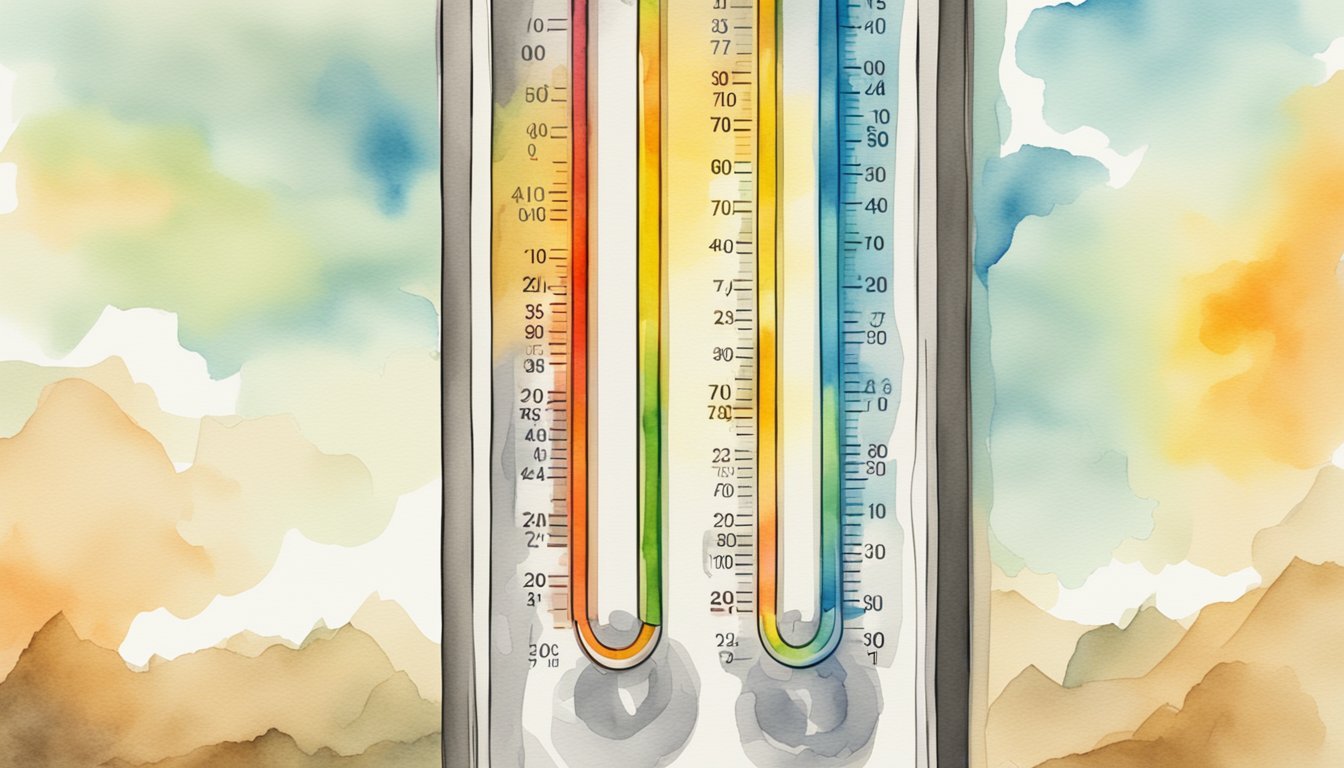Fundamentals of Temperature Recording
Capturing accurate temperature data is crucial, playing a pivotal role in climatology and meteorology. This section delves into the intricacies of how temperature is measured and why these records are vital.
Basics of Temperature Measurement
Temperature measurement has evolved from rudimentary mercury thermometers to sophisticated satellite measurements. At the heart of this evolution is the need to obtain precise readings of air, surface, and ground temperatures. To achieve this, meteorologists use a range of instruments, from those that measure temperature at weather stations to remote sensing devices on satellites that can deduce the natural ground surface temperature over large areas.
Measuring conditions are critical for accuracy. For instance, standard measuring conditions require that instruments are shielded from direct sunlight to avoid skewed readings due to radiative heating. This form of measurement stipulates a specific height above the ground for placing the instruments, typically about 1.5 to 2 meters, to obtain a representative air temperature.
Temperature records are gathered under various conditions to monitor local, regional, and global temperature changes, aiding in the understanding of weather patterns and climate change. The process of capturing this information involves maintaining a continuous and methodical recording, often carried out by national meteorological services, research organizations, and environmental agencies.
Temperature Record Importance
Temperature records hold paramount importance. They form the backbone of climatological research, allowing scientists to track and analyze weather patterns and long-term climate trends. A temperature record is more than just a data point; it is a historical account of climatic behavior that, when combined with other records, can expose natural and anthropogenic changes in the environment.
These records help in constructing a narrative of how global warming is affecting terrestrial and marine environments. They are instrumental in verifying climate models and are often used in conjunction with other meteorological measurements, such as precipitation and wind speed, to create a comprehensive picture of our atmosphere’s dynamics.
The significance of temperature records also extends to practical applications like agriculture, disaster preparedness, and infrastructure development, highlighting the unbroken link between accurate temperature recording and societal well-being.
Historical and Extremes in Temperature Records

Temperature records provide crucial insights into the Earth’s climatic patterns. They help delineate the boundaries of heat and cold that humanity and the natural world have experienced.
Global Temperature Milestones
The quest for understanding global temperature trends has been longstanding. NASA and NOAA play pivotal roles in collecting and disseminating this information. According to NASA’s land-ocean temperature index, substantial changes have been observed in global temperatures with recent years marking some of the warmest on record. Extracting data from ice cores and analyzing satellite measurements have been crucial in constructing a reliable record. These records reveal January, often the coldest month in the Northern Hemisphere, has experienced notable temperature increases, challenging what were once considered ‘normal highs’.
Extremes of Heat and Cold
The extremes of our planet’s temperature records reflect the edge of human habitation and survival. Death Valley holds the highest recorded temperature on Earth, a staggering 56.7 °C (134 °F) at Furnace Creek on July 10, 1913, officially recognized by the World Meteorological Organization. Conversely, the record low, observed at a high ridge in Antarctica presents a bone-chilling -89.2 °C. Kuwait and Iran have also recorded extreme temperatures, with Kuwait’s Mitribah hitting 54.0 °C. Occurrences such as ‘heat bursts’ have been recorded in places like Oklahoma and Texas, showcasing intense short-term temperature spikes. Experts like Christopher C. Burt from the Arizona State University scrutinize these data points, ensuring the integrity of the global climate record, understanding that each dataset shines a light on the fluctuating patterns of the Earth’s atmospheric behaviour.
Temperature Records and Climate Change

In recent years, the planetary game of hot and cold has tilted heavily towards the former, with extreme high temperatures shattering records with alarming regularity.
Impact of Global Warming
Global warming, largely driven by the increase of greenhouse gases like carbon dioxide and methane, has a stranglehold on global surface temperatures, nudging them upward. This persistent rise is not just about warmer days; it’s reshaping weather patterns, leading to more frequent and intense heatwaves. Research shows that climate change has revamped the frequency of extreme temperatures, making scorching highs less of a rarity and more of a norm.
Analyzing Long-Term Trends
Long-term climate trends are like a storybook, each year’s weather chronicling a new chapter in Earth’s dynamic climate saga. Ice sheets, those colossal guardians of the poles, are shrinking, while episodes of La Niña are reshuffling the deck, influencing droughts, floods, and fires globally. By dissecting these patterns within temperature records, scientists can piece together a detailed narrative of how our climate is evolving and what that might mean for future extremes.

